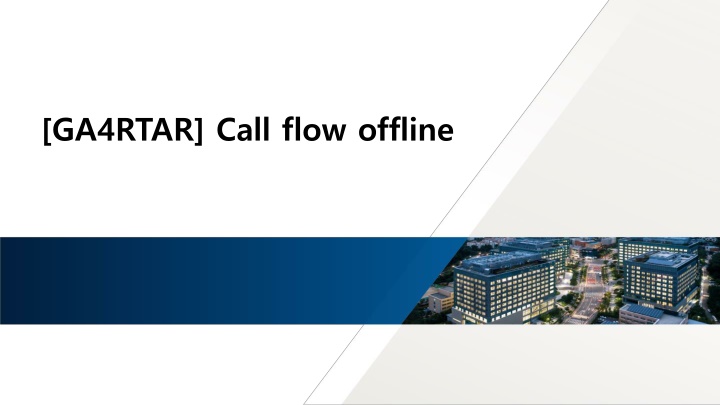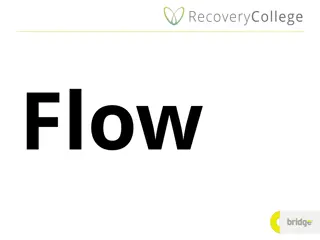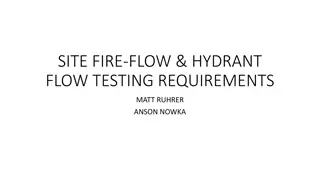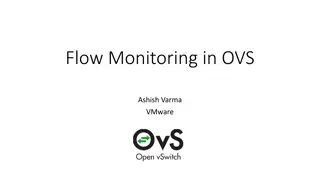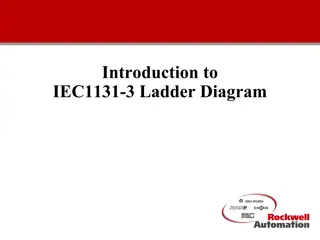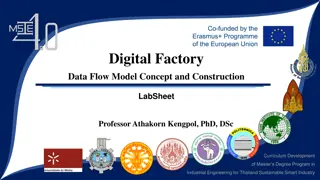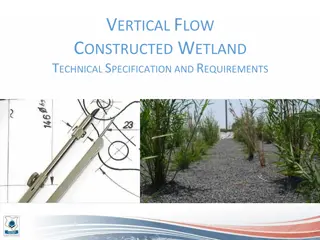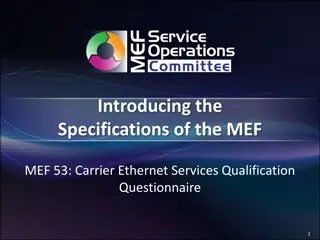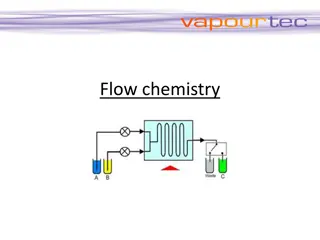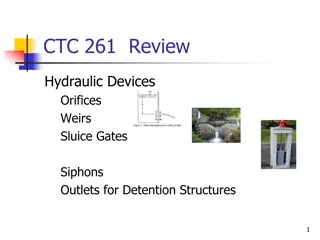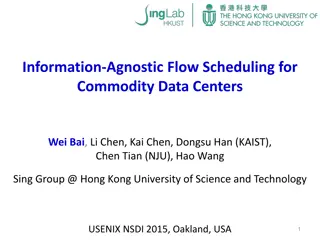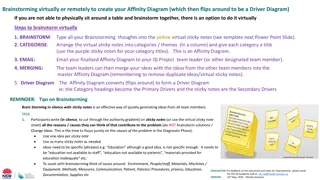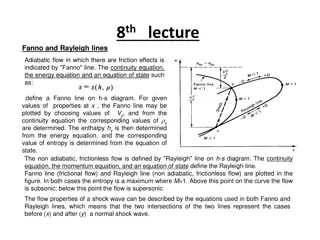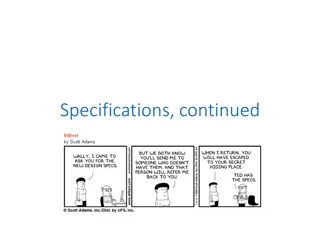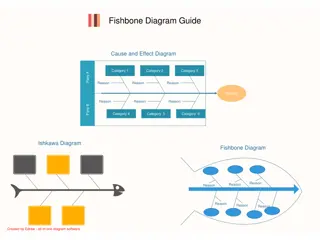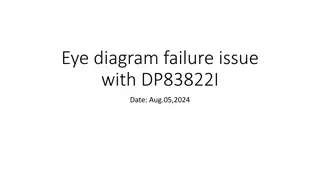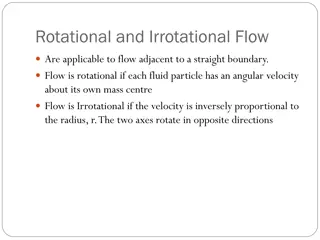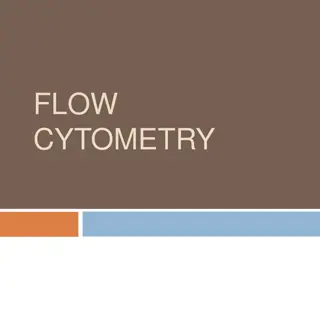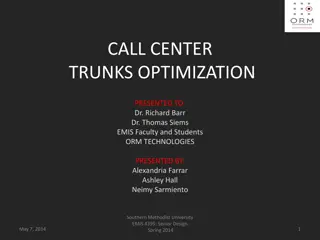Call Flow Diagram Specifications Discussion
The content discusses the specifications of call flow diagrams provided by Qualcomm, Intel, and Samsung in collaboration scenarios. It includes details on request for Quality of Service (QoS) assistance, session establishment phases, bitrate recommendations, ICE functions discovery, and more. The diagrams and scenarios aim to integrate various network support elements for enhanced communication services.
Download Presentation

Please find below an Image/Link to download the presentation.
The content on the website is provided AS IS for your information and personal use only. It may not be sold, licensed, or shared on other websites without obtaining consent from the author.If you encounter any issues during the download, it is possible that the publisher has removed the file from their server.
You are allowed to download the files provided on this website for personal or commercial use, subject to the condition that they are used lawfully. All files are the property of their respective owners.
The content on the website is provided AS IS for your information and personal use only. It may not be sold, licensed, or shared on other websites without obtaining consent from the author.
E N D
Presentation Transcript
Background The following tdocs are specifying call flow diagram, so it s better to be discussed together (and hopefully to be integrated in the end) S4-230141 (Qualcomm) S4-230181 & S4-230131 (Intel) S4-230193 (Samsung) NOTE: TS 26.506 v1.0.0 also describes call flow in In Annex A.2 (agreed in SA4#121) Qualcomm Intel Samsung 26.506 v100 CS#1 O O CS#2 O O CS#3 O O O CS#4 NOTE: Samsung and NTT proposed to remain CS#4 as FFS at the first publication of TS 26.506 (S4-230198)
Collaboration Scenario #1 141 (Qualcomm) UE1 App MSH Network Support AF PCF UE2 1: start WebRTC session 5-Tuple + media information QoS Request phase 2: request QoS assistance 3: request QoS for session 4: changes to session QoS 5: bitrate recommendation 6: bitreate recommendation 7: Adjust bitrate for session 8: inform about/re-invite with new QoS https://gitlab.com/msc-generator v8.2
Collaboration Scenario #1 TS 26.506 v100 Annex 2 UE Operator NW Service provider NW UE Operator NW Service provider NW Network Support AF Service Provider Equipment App MSH PCF Network Support AF Service Provider Equipment App MSH PCF Provisioning (optional) 3. RTC-7/6: invoke enabler 0. RTC-1: Provisioning 4. RTC-5: Request service access information 1. RTC-8: Signalling (Proprietary) 5. Response to 4 2. Response to 1 6. RTC-5: Request network support 7. N5: Request QoS Session setup phase 8. Response to 7 9. Response to 6 10. Response to 3 QoS Request phase
Collaboration Scenario #2 141 (Qualcomm) UE1 App MSH Trusted ICE Functions Network Support AF PCF UE2 Configuration phase 1: provide configuration information with trusted ICE functions 2: retrieve list of pre-configured ICE functions ICE candidates discovery 3: discover ICE candidates 4: exchange SDP offer/answer and list of ICE candidates Session setup (establishment) phase (including SDP negotiation) 5: RTC session established with ICE candidates https://gitlab.com/msc-generator v8.2 UE1 STUN/TURN Network Support AF PCF 1: request QoS assistance 2: request QoS for session QoS Request phase 3: changes to session QoS 4: bitrate recommendation 5: inform UE about QoS-related events https://gitlab.com/msc-generator v8.2
Collaboration Scenario #2 193 (Samsung) UE Trusted 5G RTC AF Service Provider NW Application / WebRTC Framework Media Session Handler Network Support AF Configuration Server Provisioning Server PCF ICE Function Service Provider Equipment Provisioning (optional) Configuration phase Session Setup Flow 0: RTC-1: Provisioning 1: RTC-1: Configuration 2: Response to step 1 3: RTC-6/5: Signalling Session setup phase 4: Response to step 3 QoS Request Flow 5: RTC-7/6: Invoke enabler 6: RTC-5: Request service access information QoS Request phase 7: Response to step 6 8: RTC-5: Request network support 9: N5: Request QoS 10: Response to step 9 11: Response to step 8 12: Response to step 5 Media Delivery Flow WebRTC traffic (Media+signaling) delivery 13: RTC-4: Transport Session Establishment 14: RTC-5: MSH configuration 15: RTC-4: Traffic delivery http://msc-generator.sourceforge.net v7.2
Collaboration Scenario #3 141 (Qualcomm) UE1 App MSH STUN/TURN WebRTC Signaling Server Endpoint 2 ICE candidates discovery 1: discover ICE candidates 2: request session setup to endpoint 2 with SDP offer Session setup (establishment) phase (including SDP negotiation) 3: match request with endpoint 2 4: Forward request for session setup to endpoint 5: Accept offer with SDP answer https://gitlab.com/msc-generator v8.2 App WebRTC Signaling Server Network Support AF PCF 1: request QoS assistance 2: request QoS for session QoS Request phase 3: changes to session QoS 4: bitrate recommendation 5: inform about/re-invite with new QoS https://gitlab.com/msc-generator v8.2
Collaboration Scenario #3 181 (Intel) : control signaling establishment 5G-RTC AF UE 5G-RTC AS MSH/ WebRTC Framework Configuration Funciton Provisioning Function 5G RTC Application Provider WebRTC Signalling Server ICE 1. Retrieve STUN/TURN server configuration Information Configuration phase 2. Server Query 3.Query Qos and Charging 4. Receive server Info 5. Receive server Info ICE candidates discovery 7. ICE feedback Session setup (establishment) phase (including SDP negotiation) 8. Session Setup 9. Session negotiation
Collaboration Scenario #3 131 (Intel) : WebRTC media flow Session management Trusted WebRTC enabled UE-2/ WebRTC Framework WebRTC enabled UE-1/ WebRTC Framework 5G-RTC AF MSH UE-2 WSS MSH UE-1 Media Function WebRTC Session establishment WebRTC traffic (Media+signaling) delivery 2. Session update 3. QoS allocation QoS request phase 5 Start Downlink Session 6. Network update QoS updates (event-driven) 7. Session update 8. updated Downlink Session Session termination 10. Session update 11 Notification a media/Data session 12 Terminate Downlink Session
Collaboration Scenario #3 193 (Samsung) UE Trusted 5G RTC AF Trusted 5G RTC AS Service Provider NW Application Media Session Handler Network Support AF Configuration Server Provisioning Server PCF ICE Function Signaling Server Media Server Service Provider Equipment Provisioning (optional) Configuration phase Session Setup Flow 0: RTC-1: Provisioning 1: RTC-1: Configuration 2: Response to step 1 3: RTC-4s: Signalling Session setup phase 4: Response to step 3 QoS Request Flow 5: RTC-7/6: Invoke enabler 6: RTC-5: Request service access information QoS Request phase 7: Response to step 6 8: RTC-5: Request network support 9: N5: Request QoS 10: Response to step 9 11: Response to step 8 12: Response to step 5 Media Delivery Flow 13: RTC-4: Transport Session Establishment 14: RTC-5: MSH configuration WebRTC traffic (Media+signaling) delivery 15a: Option 1) RTC-4: Traffic delivery (P2P) 15b: Option 2) RTC-4: Traffic delivery (SFU, MCU) http://msc-generator.sourceforge.net v7.2
Summary of high-level procedures Note) Gray color means step(s) not specified explicitly in a certain input, but existed in other inputs Qualcomm Intel Samsung 26.506 v100 Provisioning Session setup QoS request Provisioning Session setup QoS request CS#1 Provisioning Configuration ICE candidates discovery Session Establishment QoS request WebRTC traffic delivery Provisioning Configuration ICE candidates discovery Session establishment QoS request WebRTC traffic delivery CS#2 Provisioning Configuration ICE candidates discovery Session Establishment QoS request WebRTC traffic delivery QoS updates Session termination Provisioning Configuration ICE candidates discovery Session Establishment QoS request WebRTC traffic delivery QoS updates Session termination Provisioning Configuration ICE candidates discovery Session establishment QoS request WebRTC traffic delivery QoS updates Session termination CS#3
Proposed way forward Step 1) Decide the categorization principle Option 1) If we opt for per CS, the issue may be that not all procedures are applicable for all CS. Option 2) If we opt for per procedure, the issue may be that a particular CS may not need that procedure. For example, a) WebRTC control signaling establishment + b) WebRTC media flow Session management General procedure in clause 5 & each of variant procedure for CS in clause Annex A.x Step 2-1: Option1) Figure out detailed flow for each CS Using table in page 11, build an union set per each CS? Keep consistent terms & steps over all CSs Step 2-2: Optoin 2) Figure out detailed for general procedure Union set for CS#3 as baseline? Anything missed? Two parts (control + media) or a single diagram?
Agreements in Offline (Tue. 13:30 14:00) Participants: Ryan, Imed, Shuai, Naotaka, Yoshihiro, Kazuki, Hyun-Koo, Iraj, Srinivas, Saba, Serhan Terminology agreed Call flow : a whole diagram for a certain service/scenario (e.g., Figure 5.2-1 in 26.501) Procedure : subset of call flow (e.g., provisioning, etc, as described in each of sub-clauses in 26.501) Next step Imed to provide a merged call flow for CS#1 (as a good starting point) Then, go for another CS#2 and CS#3 (b/w source companies) Offline #2: Wed 11 AM (local, same place in RTC SWG)
